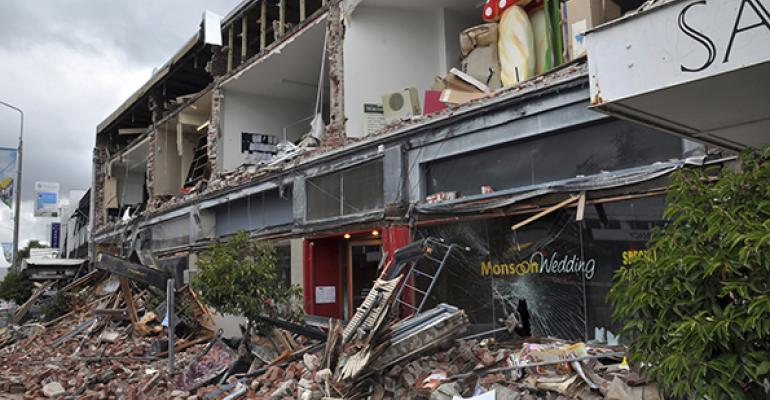Managing the various, often-volatile property and liability risks that commercial real estate owners and managers face daily requires a vigilant risk management strategy that includes frequently evaluating risks and assessing insurance programs to ensure proper coverages are in place. For instance, when it comes to estimating potential losses from such catastrophes as hurricanes and earthquakes, real estate companies are challenged by the inadequacy of modeling tools. The inherent low-frequency rate of catastrophic event also means standard actuarial techniques are not as effective. On the liability front, making sure policies align with contractual exposures requires a significant amount of due diligence combined with real estate risk management expertise. All of these challenges point to a greater need for real estate companies to partner with risk management experts that have a thorough understanding of the industry’s unique challenges. Additionally, companies need to stay informed on the changing risk environment and latest risk management techniques that can help to mitigate their financial exposures. Following are a few strategies addressing catastrophe property and liability exposures in real estate.
Setting proper limits based on catastrophe modeling
Catastrophe models, which are heavily utilized across the real estate sector, are useful only to the extent that companies are able to input accurate and detailed physical characteristics of individual properties into the modeling software. Effectively utilizing catastrophe modeling goes beyond inputting data and basing decisions on the output. Setting proper limits based on a catastrophe model requires a combination of actuarial analysis, information gathering and negotiation. In one instance, lenders were requiring coverage equal to 100 percent of the portfolio value for hurricane risks for a real estate company’s property program. However, after an analysis of the modeling results, it was ascertained that a limit equal to 50 percent of the portfolio value would cover the “worst case” estimated loss. Armed with this information, the lender agreed to negotiate and settled on a pricing consideration from the carrier. The result was a reduction of the allocated hurricane premium by $100,000.
Obtaining secondary property features to improve modeled results
With the right risk management partner, companies can model results to understand which locations exposed to natural catastrophe risks are driving the loss estimate. Obtaining detailed information on those locations ensures they are accurately reflected in the loss output with the goal of directly reducing premium.
For example, after a model was conducted for a real estate property location schedule for earthquakes, it was determined that five locations were driving 80 percent of the loss estimate. After receiving additional information pertaining to the earthquake design of these five buildings and running the model again, additional details on the buildings were inputted, which led to a reduction of $80,000 in the earthquake premium.
Elimination of subcontractor warranties and limitations
General liability policies often contain warranty language exclusions that can create significant financial exposure for companies. A real estate company learned the hard way when, during a project, an employee caused an unstable ladder to fall on a prospective tenant, causing serious injury. The injured party made a claim against the landlord for $1 million, but when the real estate owner placed his general liability carrier on notice, coverage was denied due to wording in the policy that excluded coverage arising out of any construction work. By negotiating the removal of the language from the general liability policy, a potentially costly gap in coverage was filled so the real estate company was covered moving forward.
Alignment of policy coverage with contractual exposures
In the real estate world, liabilities between companies are often transferred by contract. The company that transfers liability, and the company that assumes liability, will require that adequate insurance coverage is provided to support the liability transferred. Contract and coverage review to ensure the content of relevant policies supports the agreed contractual obligations is a big part of an insurance solution for real estate companies. Real estate companies should work with risk management partners who will help them with structuring insurance and indemnification provisions contained in their contracts with outside vendors and contractors. In addition, assistance should be provided on developing a monitoring process to obtain the appropriate insurance documentation for all work being done by outside vendors and contractors. By following these strategies and staying ahead of the curve on the changing risk environment and up to date on risk management practices, real estate companies can help mitigate financial exposures.
Brian Dove is USI’s national real estate practice leader and is based in USI’s Houston office. The real estate group leverages the USI ONE Advantage™ with prospects and clients across the country. To learn more about USI ONE, contact Brian at [email protected] or 713-490-4597.

